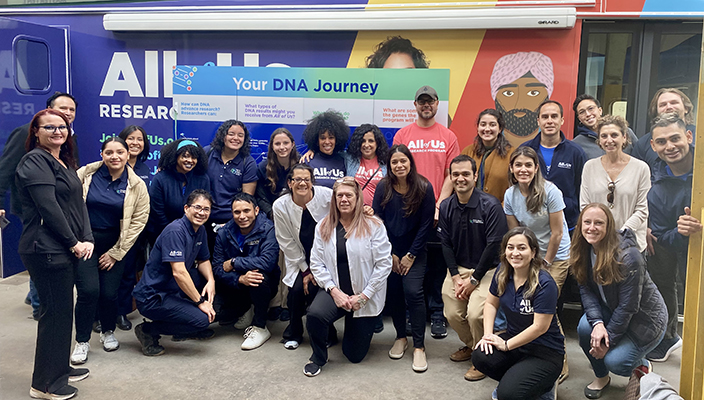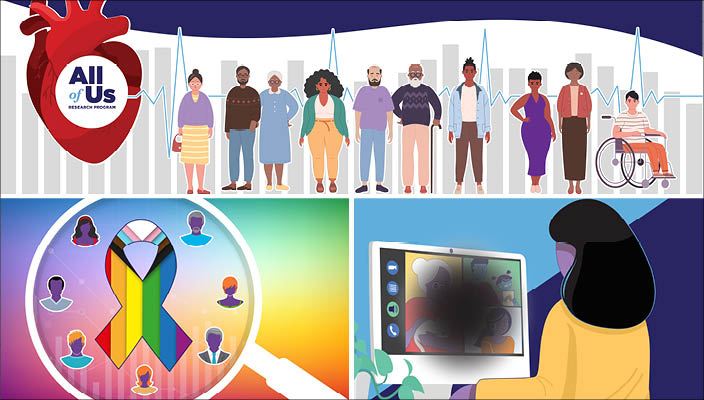“I want to address problems, not just raise them,” said Normarie Torres-Blasco, Ph.D., assistant professor, early-stage investigator, and clinical psychologist at Ponce Health Sciences University in Puerto Rico.
Dr. Torres-Blasco wants to find solutions to improve health care access, and to ensure that mental illness is addressed by standard health care treatments. She’s been a patient, a caregiver, and a researcher. Her mix of experiences led her to a career studying the link between mental illness and chronic disease.
Dr. Torres-Blasco’s path to health research started as an undergraduate in 2009. She was living with her great-grandmother and namesake, Norma. She was helping with Norma's end-of-life care in Ponce, a city on the southern coast of Puerto Rico.
Norma suffered from depression after losing her husband of 62 years. Finding therapy was a challenge. Her great-grandmother developed dementia, declined rapidly, and passed away within a year. She was 88. Dr. Torres-Blasco was 18.
“I was very close to her,” she said. “If I had had the knowledge or resources, maybe my great-grandmother would have been with me longer.”
This life-changing experience helped her find her calling. She now seeks to document the need for mental health support to be part of end-of-life care.
A Path to Research with All of Us
Dr. Torres-Blasco completed her Ph.D. in clinical psychology at Ponce Health Sciences University in 2018. Her thesis explored improving health care access and reducing health disparities among Latinos. She first heard about All of Us at a cancer-research conference for Latinos. She is now a registered All of Us researcher.
“There is strong evidence showing how cancer outcomes are impacted by mental illness,” Dr. Torres-Blasco said. “I started thinking about how cancer patients at the end of life needed mental health services, just as my great-grandmother did.”
Ponce is a city surrounded by rural towns, some in mountain regions. Many people have severely limited access to health care. With the support and guidance of her mentor, Associate Professor Eida Castro-Figueroa, PsyD, Dr. Torres-Blasco is studying cancer rates and co-existing chronic health conditions.
“She is so focused and passionate about science and serving underserved populations,” said Dr. Castro-Figueroa. “I will always remember our first meeting. Her life experiences really informed her research in a deep way.”
The two began collaborating on health disparities. They documented late-stage cancer diagnoses of underserved Latinos. They looked at people who have less access to early detection. This group also has few psychotherapy and communications resources in Spanish.
Dr. Torres-Blasco, 32, has already co-authored 21 papers in peer-reviewed journals and is now developing a model for advanced cancer treatments. The model will include communication and psychotherapy for both patients and caregivers. She has a grant from the Research Centers in Minority Institutions (RCMI) program in the National Institute on Minority Health and Health Disparities, which includes funding from All of Us.
“Researchers from diverse backgrounds bring robust perspectives to the program,” said Karriem Watson, D.H.Sc., M.S., M.P.H., All of Us chief engagement officer. “Dr. Torres-Blasco incorporates her lived experiences. She is giving back to her community by advancing health knowledge.”
She explores how often chronic health conditions occur among those with mental illness. The conditions include cancer, heart disease, and diabetes. She also hopes to understand the connections to ancestry and genetics.
“People with mental illness have a higher morbidity and mortality rate due to preventable chronic diseases,” Dr. Torres-Blasco said.
She uses the All of Us Researcher Workbench to explore these links. Her plan is to develop strategies to address health care access gaps and disparities.
“I want to make the point that we need more services in mental health for Latinos coping with chronic health conditions,” she said. “That’s one of the main goals of my research with All of Us.”
The Patient: Living with a Rare Heart Condition
Her family and community have been a guiding force in her career. But Dr. Torres-Blasco also understands the challenges patients face firsthand. She has lived with a chronic heart condition her entire life.
Her own health troubles began while growing up in a rural town outside Ponce. At age 5, while learning to ride a bicycle, she felt a sudden, sharp stabbing pain in her chest and collapsed on the ground. Doctors didn’t see any need to perform tests on a young child. They said she just needed to get back on the bike and try again. But similar episodes continued throughout her teens and young adulthood.
“When I had pain, I would lose consciousness. My body would shut down,” she said. “I tried to accept it and just deal with it.”
Doctors continued to dismiss the signs. They told her and her family that she was dramatic and overly emotional. Finally, at university, she saw a cardiologist. She wanted to test the electrical activity of her heart. They found she had arrhythmia, an irregular heartbeat that can cause trouble when the heart’s electrical signals misfire.
She received medication, but the fainting spells continued. She graduated with her doctoral degree and married her longtime partner, Jose Oscar Santiago, in 2018. It was a calm and happy time. Yet she soon experienced another painful episode. She got more testing and was finally diagnosed with neurocardiogenic syncope. This rare, poorly understood disorder is triggered by the body’s abnormal or heightened response to various stimuli.
Her doctor gave Dr. Torres-Blasco a pacemaker. This has drastically improved her condition and her daily life. In 2021, she gave birth to a healthy baby girl, Stella.
A Focus on the Future in Ponce
Dr. Torres-Blasco shares the hurdles she has overcome to help others. Dr. Castro-Figueroa taught her how to create partnerships with the students she mentors. Dr. Torres-Blasco advises graduate students to speak up, trust their instincts, and refuse to let others dismiss them.
“I am an open book,” Dr. Torres-Blasco said. “When young women start in my lab, I share my experiences. It is hard for us as women to speak about problems.”
Dr. Castro-Figueroa credits her protege’s success in part to her candor about her challenging times.
“She is a champion!” Dr. Castro-Figueroa said. “She shares the lessons she’s learned through her lived experiences, how she has overcome obstacles. It allows students to think about their own pitfalls and to sit down together to solve them.”
These experiences — as a researcher, caregiver, and patient — are what drive Dr. Torres-Blasco’s commitment.
“I want to give back to my community,” she said. “That is why I have stayed in Ponce.”










